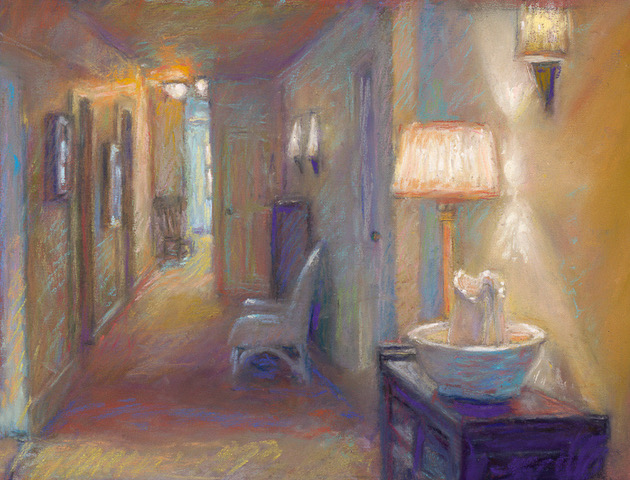“Being an artist is a true blessing. It’s a reason to get up in the morning,” said pastel painter Judith Kazdym Leeds.
The artist’s name shines not only in the world of art but also in the world of book covers. She has created thousands – no joke – of covers, including “The Color Purple,” which is considered among the 25 most iconic book covers in history.

“When I made it, I didn’t consider it my most creative cover,” the artist said with a resounding laugh.
Judith graduated with honors from Boston University’s School of Fine Arts and, among her many awards and honors in her life she became an Elected Member of the Salmagundi Club, NYC, a Signatory Member of the Pastel Society of America, and a Master Circle artist of the International Association of Pastel Societies.
Her works are in private collections and have been exhibited in museums across the United States. Her work is also part of the permanent collection of the Mayo Performing Arts Center (MPAC) NJ.
She began drawing at the age of four when she carved a design into a new piece of furniture, “And my parents let me live,” the artist said with a smile.
When she contracted Lyme disease Judith had to stop her work doing book covers. That “allowed” her to devote herself totally to painting, both in oil and pastel.
“I consider myself very lucky because after the book covers I came to a stage in my life where I can do what hits me and what I love,” said the artist.

Judith’s concept of painting, regardless of whether it is portraiture and figurative art, landscapes, still life, or interiors, is expressed in her statement, “I try to get an emotional feeling in my work which is far more important than technique.” She considers technique “only a tool to convey my message.”
Known primarily for her portraits and figurative art, Judith is also well known for her still life paintings in which she depicts Americans’ eating habits (including her own, she is quick to point out with a laugh).


Her approach to both still life and the landscape is instinctive.
If in landscape painting the work emerges as a result of a feeling for the place visited as what she calls “places of the heart” (Maine is an example), in still life work her feeling is linked to traditions and everyday life.
She began a specific still life series years before, but stopped. “And now it’s like the dam opened up and I have all these still lifes that I want to do,” said the artist.
In her works, which are charged with vibrant color, the subjects of the heart become donuts, fried eggs, bacon, even M&Ms.

She depicts commonplace objects, collective images that refer to American everyday life. Therefore the reference to the pop art of Wayne Thiebaud reinterpreted in a more emotional, less ephemeral key is inevitable.
She usually works from life, and when she chooses to realize a portrait, she does so from live models with whom she talks to better understand the character behind the body or the poses. She takes photos from all points of view and then she might combine the hand in a picture with the pose of another picture. She usually does some sketches to experiment with skin tones, values, and color studies.
“But it’s only when the models are moving, that you get the feeling of the person,” said the artist, who prefers to capture the subject in a natural pose instead of a plastic, static pose. “The emotion that you have with spontaneity is not the same that you have with stiff poses,” she added.
In this way, she does her more successful figurative work. “Combining all the information is the key.”

She works on substrates both vertical and horizontal, because of the sizes and the subjects, and she uses her technique indistinctly for all the subjects. She usually starts with a loose charcoal sketch underneath to try to get the layout on the page and then she slowly starts to put in little touches of color in the shapes, the shadows, and the values.
“First big shapes and then values,” said the artist who usually starts with mid-tones. She then adds a complimentary color and layers warms over cools again continuously until the end. She works all over the whole picture to try to see what’s going on and work it up. She tends to start with a little harder pastels, then she goes to the soft luscious ones.
“I love, love, love doing what I do, but there are so many paintings I want to paint and not enough time,” she said with another smile.

Judith Kazdym Leeds will be among the faculty members of Pastel Live, online September 18-20th, 2024. For her Pastel Live demonstration, she will create for us a new donut painting titled “Jelly Sandwich.”
***
Browse more at realismtoday.com, and be sure to join us for the next Pastel Live online art conference!




